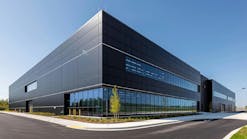This article originally appeared in the February 2020 issue of Security Business magazine. When sharing, don’t forget to mention @SecBusinessMag!
Security system integrators are being asked to get involved in issues that go far beyond specifying the traditional security technologies of access control, surveillance and intrusion; in fact, many integrators are now being asked to provide guidance on workplace violence issues, active shooter planning and the unique security needs as it relates to different environments – whether a hospital, school building, manufacturing facility or corporate office.
This evolution of the security systems integrator beyond systems specification, installation and service agreements now must include technology training, consultative services and long-term strategic planning. In some cases, security integrators meet with clients several times a month to review security issues and to address ever-changing security needs.
The change from specifier and installer to overarching security resource has been embraced by a growing number of security professionals who recognize that new security solutions and technologies are being developed at a rapid pace, along with the always-evolving security needs of today.
“End-user customers trust their integrators, and they look towards us for direction,” says John Krumme, CEO of Kansas City-based integrator Cam-Dex Security Corp. “We are with them on a weekly basis or every other week to talk about different issues they want to address around the facility. That is a relationship and position we want to be in as an integrator – to be recognized as a valuable resource who can help solve their problems.”
The need for a more collaborative approach stems from changes in how society and businesses view safety and security. Previously, the focus was on keeping the unknown bad guy out of a building or being able to clearly identify a person. Today, security extends beyond the footprint of a physical building to encompass the perimeter, the parking lot and an entire campus. Unfortunately, sometimes the bad guy is not an unknown person at all, but a disgruntled former employee or customer.
Recognizing this, Pennsylvania-based integrator The Protection Bureau now encourages its customers to hold pop-up drills – similar to fire drills conducted with students and teachers in the K-12 education market, but focused on what to do if a security alarm goes off during the day, such as how to get out of the building and where to safely congregate. The company also provides on-site assistance to customers on how to operate access control and surveillance systems in the command center during the mock drill so that should a real situation happen, the customer is prepared.
“The awareness of workplace violence has increased, and the role of the systems integrator is to help the client use technology to create a secure environment for their employees, students and the building as a whole,” says J. Matthew Ladd, President of The Protection Bureau. “One of our main roles today is to take technology and utilize it so that our customers have a better tool.”
Market Spotlight: Healthcare
Healthcare facilities present many unique challenges, thanks to a combination of needing to be open and accessible to patients, but also secure enough to protect a patient’s privacy and the people inside the building should any type of security situation occur.
In this environment, it is key to ensure there is “live time control,” Ladd explains. “A lot of camera systems today are reactive vs. proactive. (To be more proactive), we are using some facial recognition technology, where the camera system can send an alert if an unauthorized person enters a facility so security can be deployed to investigate.”
In the healthcare market, it is also critical to take a multi-layered approach to ensure that patients and visitors who enter the building remain safe at all times. Locking down certain areas – such as the Emergency Room – using uniformed security guards and additional surveillance tools can help ensure these high-traffic areas are always monitored and secure.
The increasing amount of technology and electronics being installed in buildings has been driven by more businesses wanting to address the growing trend of workplace violence issues, Krumme says. This includes facilities leveraging the capabilities of access control integrated with video, and incorporating more optical turnstiles to control the flow of visitors.
“Twenty years ago, workplace violence was not a common topic of discussion with customers,” says Christopher Wetzel, EVP and Founder of Pittsburgh-based Intertech Security. “Now it is almost daily that you hear news of an active shooter incident. Because of this, we are trying to push security as far to the perimeter as we can. (Especially for) an active shooter, if we can receive a notification about a threat earlier, then (security) can have more time to react.”
This can be especially important in the Emergency Room environment, where, for example, a person injured due to gang violence remains in danger due to the threat of further retaliation. Wetzel says some healthcare facilities are deploying sally ports so people first enter one controlled area before gaining full access to another section or the entire facility. Another solution is to have the ability to quickly lock down an area due to a heightened security risk.
Trusted Advisor
Beyond technology, security systems integrators are also being called upon to serve as a general resource on all things related to security. In one instance, Krumme says a customer asked for help in identifying a uniformed security guard company to provide protection and response due to the threat of domestic violence for an employee.
“We are being asked to get involved in these situations even though response is not our expertise,” Krumme says.
As security needs and demands change, security systems integrators are proving to be a valuable resource to customers beyond the traditional security technology acumen.
“The awareness of workplace violence has increased, and the role of the security systems integrator is to help the client utilize technology to create a secure environment,” Ladd says. “This is a major part of our business, and it is only going to continue to grow. As a systems integrator, we need to make sure our people are aware, educated and trained so we can pass useful information onto the client to help them improve the security within their facilities.”
Dominic Burns is President and CEO of A.C. Technical Systems Ltd., a systems integration company based in Ontario, Canada. A.C. Technical Systems and all the other integrators mentioned in this article are part of Security-Net.





